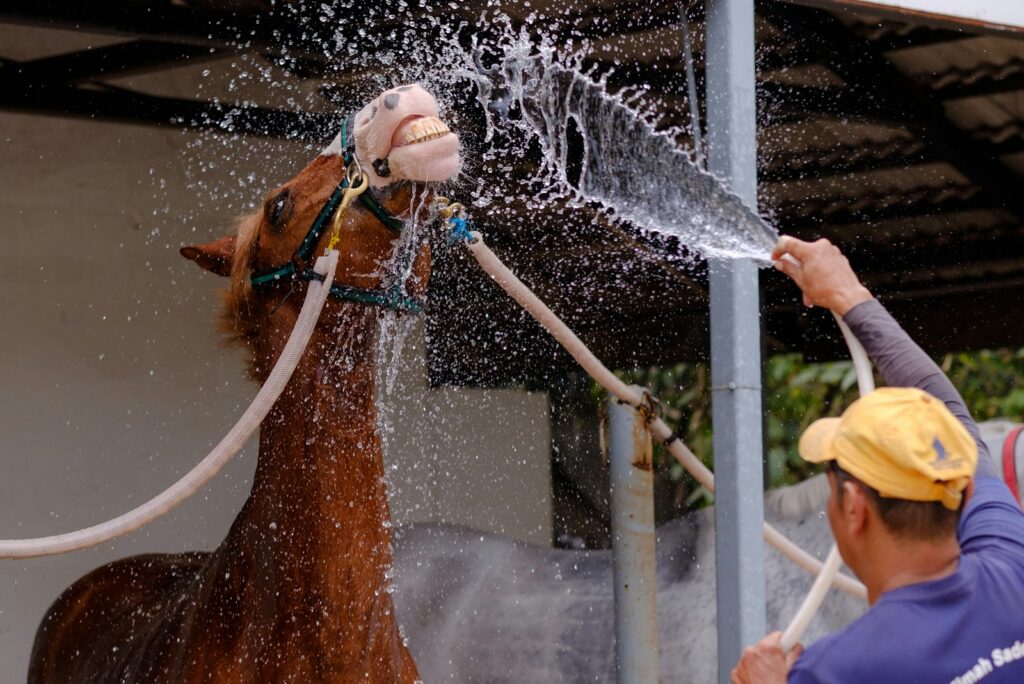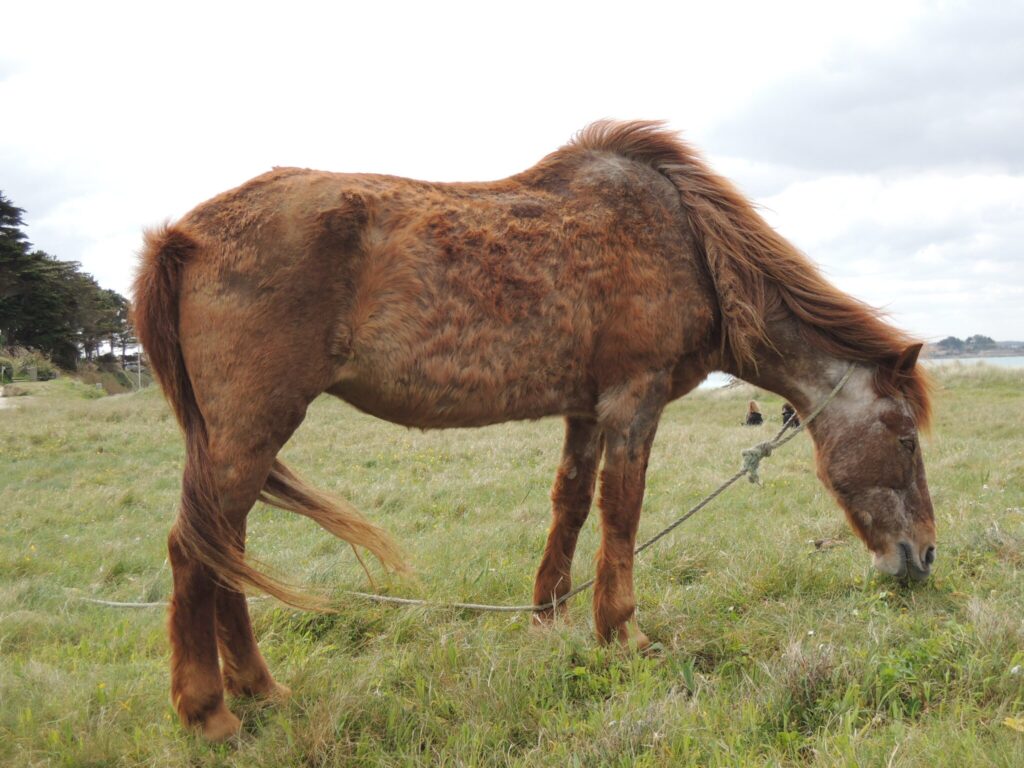Every horse owner dreads the sight: raw, painful sores on their horse’s legs, often accompanied by swelling, heat, and even lameness. Mud fever, also known as pastern dermatitis or scratches, is a common but potentially serious skin condition that affects horses, particularly during wet seasons. Despite its name, mud isn’t always the culprit—this condition can arise from various causes and manifest in different forms. Understanding the nature of mud fever, recognizing its early signs, and implementing effective preventative measures are crucial skills for responsible horse care. This comprehensive guide will walk you through everything you need to know about identifying, treating, and preventing this uncomfortable condition, helping your equine companion stay healthy and comfortable year-round.
What Exactly Is Mud Fever?

Mud fever is a form of dermatitis that typically affects the lower limbs of horses, though it can occasionally appear on other parts of the body. The condition is characterized by inflammation of the skin, often accompanied by bacterial infection that penetrates through cracks or damaged areas in the skin barrier. Contrary to popular belief, mud fever isn’t a single condition but rather a term that encompasses several skin problems with similar symptoms. The primary causative bacteria is typically Dermatophilus congolensis, although other microorganisms including fungi can be involved in some cases. Though more prevalent during wet winter months, mud fever can occur year-round and affects horses of all breeds, though those with white legs or feathered legs may be more susceptible due to their skin sensitivity and difficulty keeping the areas clean and dry.
Recognizing the Signs and Symptoms

Early identification of mud fever is crucial for prompt treatment and preventing the condition from worsening. The initial signs often include heat and swelling in the affected area, typically around the pastern or heel. As the condition progresses, the skin becomes red and inflamed, and small scabs may form, often with hair matted to them. When removed, these scabs can reveal raw, bleeding skin underneath, which can be quite painful for the horse. In more severe cases, you might notice your horse becoming reluctant to move or showing signs of lameness, particularly if the affected area covers a joint. Some horses may also show behavioral changes when you try to handle or clean their legs, indicating discomfort or pain. The skin may eventually crack and exude a clear or yellowish discharge, which can have a distinctive, unpleasant odor in cases of bacterial infection.
Common Causes and Risk Factors

While mud fever’s name suggests mud is the main culprit, the condition can arise from multiple factors working together. Prolonged exposure to wet conditions, whether from muddy paddocks, inadequate drying after washing, or continual rain, is often the primary environmental trigger. The constant moisture softens the skin, compromising its protective barrier and making it vulnerable to bacterial invasion. Physical trauma from rough terrain, scratches from vegetation, or even poorly fitted boots can create entry points for bacteria. Certain bacterial species, particularly Dermatophilus congolensis, are especially adept at penetrating damaged skin when conditions are favorable. Horses with white legs tend to have more sensitive skin, making them more susceptible, while those with feathered legs may trap moisture and debris more easily. Additionally, poor management practices such as infrequent grooming, inadequate nutrition affecting skin health, or insufficient shelter from wet conditions can increase a horse’s risk of developing this painful condition.
Immediate First Aid for Mud Fever
When you first notice signs of mud fever, prompt action can significantly reduce its severity and duration. Begin by moving your horse to a clean, dry environment if possible, as continuing exposure to wet or muddy conditions will likely worsen the problem. Gently clean the affected area with warm water and a mild antibacterial wash specifically formulated for horses, being careful not to scrub harshly which could damage the skin further. Patting rather than rubbing the area dry with a clean towel is essential, as rubbing can cause additional irritation to already inflamed skin. If scabs are present, resist the urge to forcibly remove them; instead, soften them with the warm water and gentle washing, allowing any that are ready to come away naturally. After cleaning, ensure the area is thoroughly dry before applying any treatments, as trapped moisture can exacerbate the condition. For mild cases caught early, this first aid approach followed by keeping the area clean and dry may be sufficient to resolve the issue before it develops into a more serious infection.
Effective Treatment Strategies

Treating established mud fever requires a multi-faceted approach focused on eliminating infection, reducing inflammation, and promoting healing. After the initial cleaning, applying an appropriate topical treatment is crucial—your veterinarian may recommend antimicrobial creams, barrier ointments, or specific mud fever preparations containing ingredients such as tea tree oil, aloe vera, or medical honey. In more severe cases, particularly those with significant bacterial infection, your vet might prescribe antibiotic ointments or even systemic antibiotics. Inflammation can be addressed with anti-inflammatory medications if recommended by your veterinarian, especially if the horse is experiencing significant discomfort. Throughout treatment, maintaining a clean, dry environment is essential—stable bandages may be recommended to protect treated areas, though these must be changed regularly and applied correctly to avoid creating a warm, moist environment that could worsen the condition. Consistency is key in treating mud fever; even after symptoms appear to improve, continuing the treatment protocol for the recommended duration helps prevent recurrence from bacteria that might still be present but not causing visible symptoms.
When to Call the Veterinarian

While mild cases of mud fever may respond to home treatment, certain situations warrant professional veterinary attention. If you notice significant swelling, excessive heat in the affected limb, or if your horse shows signs of lameness, these could indicate a more serious infection that requires medical intervention. Cases that don’t show improvement within a few days of home treatment, or those that seem to be spreading despite your efforts, should be evaluated by a veterinarian. Any signs of tracking lines moving up the leg (which could indicate infection spreading into the lymphatics) require immediate veterinary attention, as this can quickly become a serious systemic concern. Additionally, if your horse appears to be in considerable pain, is reluctant to bear weight on the affected limb, or develops a fever, these are clear signs that the infection may be deeper or more severe than a typical case of mud fever. Your veterinarian can perform proper diagnostics, including bacterial cultures if necessary, to determine the exact cause and most effective treatment approach for your horse’s specific situation.
Environmental Management Strategies

Creating an environment that minimizes mud fever risk is perhaps the most effective long-term strategy for prevention. Paddock management is crucial—consider installing proper drainage systems in turnout areas, creating designated “sacrifice” areas with good footing for wet weather use, or using gravel or woodchips in high-traffic areas like gateways and water troughs to reduce mud accumulation. During particularly wet periods, consider adjusting turnout schedules to avoid the muddiest times of day or implementing rotational grazing to allow pastures recovery time. Providing adequate shelter gives horses the option to escape persistent rain or snow, which can significantly reduce their exposure to moisture. Inside the stable, ensure good ventilation to prevent humidity buildup, and use appropriate bedding that wicks moisture away from your horse’s legs. For horses particularly prone to mud fever, consider establishing designated muddy-weather protocols that might include shorter turnout periods, protective leg wraps for turnout (if suitable for your horse), or more frequent checks of lower limbs during wet seasons.
Grooming Practices for Prevention

Establishing proper grooming routines is essential for mud fever prevention, particularly during wet seasons. Resist the urge to wash legs frequently, as counter-intuitive as this might seem—constant wetting and incomplete drying can compromise the skin’s natural protective barrier. Instead, allow mud to dry completely on the legs before gently brushing it away with a soft brush. When washing is necessary, use lukewarm water and mild, horse-specific cleansers rather than harsh soaps that might strip the skin’s natural oils. Complete, thorough drying is absolutely critical—use clean towels to pat legs dry, paying special attention to creases and folds where moisture might linger. For horses with feathered legs, consider carefully trimming the feathers during wet seasons to improve air circulation and make cleaning easier, though this should be balanced against the natural protection these feathers can provide. Establish a regular schedule for checking your horse’s legs, running your hands down them to feel for any early signs of heat, swelling, or scabbing that might indicate developing mud fever.
Protective Barrier Products

Various products can help create a protective barrier on your horse’s legs to prevent mud fever development during high-risk periods. Petroleum jelly, lanolin-based ointments, and commercial barrier creams can be applied to clean, dry legs before turnout to repel moisture and prevent bacterial penetration. For maximum effectiveness, ensure legs are completely clean and dry before application, as applying these products over dirty skin can actually trap bacteria against the skin. When selecting products, look for those specifically formulated for equine use, as these are less likely to cause skin irritation and are often designed to be breathable while still providing protection. Some products include antimicrobial ingredients such as tea tree oil or silver that offer additional protection against bacterial colonization. Remember that barrier products need regular reapplication, especially after washing or heavy rain exposure, and should be completely removed and the skin allowed to breathe regularly to prevent any inadvertent trapping of moisture or debris that could potentially cause problems rather than prevent them.
Nutritional Support for Skin Health

A horse’s nutrition plays a significant role in maintaining healthy skin and a strong immune system, both critical factors in mud fever prevention. Ensure your horse receives a balanced diet with adequate protein, which provides the building blocks for skin cell regeneration and repair. Essential fatty acids, particularly omega-3s, contribute to skin health and can help maintain the integrity of the skin barrier; these can be supplied through quality forage, flaxseed, or specialized supplements if needed. Zinc and copper are minerals vital for skin health and wound healing, while vitamin E serves as an important antioxidant that supports immune function. A deficiency in biotin can lead to poor hoof and skin quality, making supplementation beneficial for horses prone to skin issues. For horses with recurrent mud fever issues, consider consulting with an equine nutritionist to evaluate your horse’s diet and recommend appropriate adjustments or supplements that might bolster their skin health and natural resistance to infections. Remember that dietary changes should be implemented gradually, and any supplementation should be appropriate for your horse’s specific needs and workload.
Protective Gear and Equipment

Various types of leg protection can help shield your horse’s limbs during high-risk conditions, though these must be used properly to avoid creating problems. Mud turnout boots designed specifically for wet conditions can provide a physical barrier against mud and moisture, but must be removed daily for cleaning and to allow the skin to breathe. For stabled horses, stable bandages can protect healing areas, though these require correct application to avoid pressure points and must be changed regularly. Some horse owners use specialized mud fever boots that are designed to be breathable while still providing protection. When using any protective equipment, proper fit is crucial—too tight and you risk interfering with circulation or creating rubs, too loose and you may actually trap moisture and debris against the skin. All leg protection should be cleaned regularly and allowed to dry completely between uses to prevent them from harboring bacteria or fungal spores that could contribute to skin problems.
Seasonal Management Adjustments

Adapting your horse management practices seasonally can significantly reduce mud fever risk during high-risk periods. During wet seasons, consider implementing a rotational turnout schedule that allows paddocks recovery time to drain and dry rather than becoming continuously churned into mud. Having a “winter routine” ready before challenging weather arrives can help prevent mud fever rather than requiring you to react once it develops. This might include adjusted turnout schedules, protective strategies, and increased vigilance in checking legs daily. Some horse owners find stabling during the worst weather beneficial, though this must be balanced with the horse’s need for exercise and the potential negative impacts of confinement. For horses living out year-round, providing adequate shelter and creating dry standing areas with good drainage becomes especially important. Being proactive about paddock maintenance before wet seasons arrive—clearing drainage ditches, addressing low spots that collect water, and establishing sacrifice areas—can dramatically reduce mud exposure when challenging weather eventually arrives.
Managing Recurrent Cases

Some horses seem particularly prone to mud fever, developing repeated episodes despite good management. For these individuals, working with your veterinarian to identify any underlying factors is essential. Conditions like Cushing’s disease (PPID) or metabolic syndrome can affect skin integrity and immune function, making horses more susceptible to skin infections. Allergic responses to environmental factors or even to treatments used for previous episodes can sometimes masquerade as or complicate mud fever. For horses with proven susceptibility, implementing preventative measures year-round rather than just during wet seasons may be necessary. This might include regular application of barrier creams even during dry periods, consistent use of nutritional supplements that support skin health, or management adjustments that minimize all risk factors specific to your horse’s situation. Keeping detailed records of outbreaks, including their timing, severity, response to treatments, and any correlations with management changes, can help identify patterns and potential triggers that might otherwise be overlooked.
Creating a Mud Fever Prevention Plan

Developing a comprehensive, customized prevention plan for your specific situation can dramatically reduce mud fever incidence. Begin by assessing your horse’s individual risk factors: do they have white legs, feathering, or a history of skin sensitivities? What is your environment like—do you deal with heavy clay soil that holds moisture, or do you have areas that drain poorly? Consider your management capabilities: do you have options for stabling during wet periods, resources for paddock improvements, or time for additional preventative grooming? Based on these assessments, create a written plan that addresses environmental management, grooming protocols, possible protective strategies, and nutritional support tailored to your horse’s needs. Include specific trigger points for implementing additional measures, such as when rainfall exceeds certain amounts or when temperatures drop to levels that slow drying. Having this plan prepared in advance allows you to respond proactively to changing conditions rather than scrambling to address problems after they develop. Share this plan with anyone who helps care for your horse to ensure consistent implementation across all handlers.
Mud fever may be a common problem in equine care, but with the right knowledge and preventative strategies, it doesn’t have to be an inevitable part of horse ownership. By understanding the causes, recognizing early signs, and implementing consistent preventative measures, you can significantly reduce your horse’s risk of developing this painful condition. Remember that prevention is always easier and more effective than treatment, making proactive management the cornerstone of mud fever control.
When mud fever does occur despite your best efforts, prompt recognition and appropriate treatment can minimize its impact and duration. Pay attention to your individual horse’s needs and susceptibilities, adapting your management approach accordingly. With vigilance, good hygiene practices, and appropriate environmental management, you can keep your horse comfortable and their legs healthy throughout even the most challenging weather conditions.







